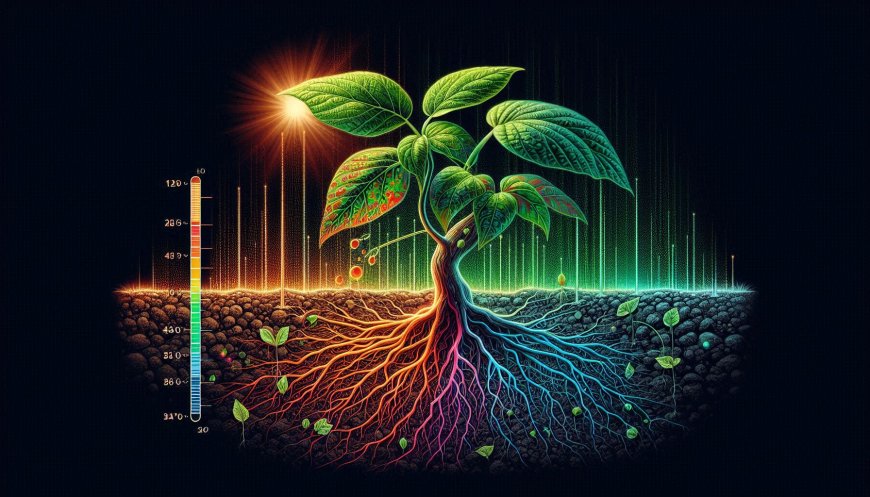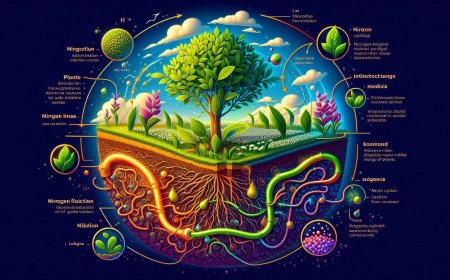Thermotropism: How Plants Sense and Respond to Temperature
Learn about thermotropism in plants—how they respond to temperature changes, grow towards or away from heat sources, and adapt to various environments. Discover how thermotropism impacts plant survival, growth, and resilience.

In the complex world of plant biology, there’s a fascinating phenomenon known as thermotropism—plants' ability to sense and respond to temperature changes by altering their growth patterns. While we usually think of plants as passive life forms simply reaching for the sun or reacting to touch, their responses to temperature reveal a nuanced, adaptable side of plant behavior, where temperature changes guide growth, survival, and even reproduction.
Understanding Thermotropism
Thermotropism is a type of tropism, or growth movement, in response to environmental stimuli, with "thermo" referring specifically to temperature. Plants exhibit thermotropism by adjusting their orientation, growth rate, or cellular structure to favor optimal conditions. For instance, roots and shoots may grow towards or away from a heat source depending on how temperature affects their survival and development.
Two primary types of thermotropism are commonly observed:
- Positive Thermotropism: When plant growth is directed towards a heat source. This might happen in cold environments where certain parts of a plant, like roots, actively seek out warmer zones in the soil to maintain necessary metabolic processes.
- Negative Thermotropism: When growth is directed away from a heat source, helping plants avoid damage from excessive heat. Leaf orientation can be an example, where certain plant leaves reorient to avoid the hottest parts of the day, reducing the risk of overheating.
How Do Plants Sense Temperature?
Plants don’t have nerves like animals, so how do they detect and respond to temperature? They rely on temperature-sensitive proteins and cellular mechanisms to process heat stimuli. For instance, plants have special proteins, such as heat shock proteins (HSPs), which are produced in response to increased temperatures. These proteins help protect cells from heat-induced stress by stabilizing proteins and other cellular structures, ensuring the plant remains functional under adverse conditions.
Plants also possess other receptors and hormones that play roles in thermosensing, including phytochrome and thermosensitive transcription factors. These molecules help regulate gene expression in response to temperature fluctuations, leading to physiological changes that either encourage or inhibit growth.
The Role of Thermotropism in Plant Survival
Thermotropism allows plants to maintain stable internal environments and optimize metabolic processes, especially in climates where temperatures vary dramatically between day and night or across seasons. Here’s how thermotropism can influence different aspects of plant growth and survival:
- Seed Germination: Temperature affects seed germination rates, with some plants only sprouting at certain temperatures. This form of thermotropism ensures that seeds germinate at optimal times, improving their chances of survival.
- Root Growth and Soil Temperature: Roots often exhibit positive thermotropism by growing towards warmer areas in the soil. This response allows roots to locate nutrient-rich and more metabolically active areas, promoting better water and nutrient absorption.
- Leaf Orientation and Photosynthesis: In high temperatures, leaves may reorient themselves or even fold to minimize sun exposure, reducing the risk of water loss through evaporation and protecting cells from damage. This thermotropic adjustment helps balance the plant’s need for light with its need to avoid heat stress.
- Flowering and Reproductive Success: Certain plants use temperature cues to initiate flowering or other reproductive activities. By flowering at specific temperatures, they can attract the right pollinators or ensure their seeds are dispersed when conditions are favorable.
Thermotropism and Climate Change: A New Challenge for Plants
With the rising global temperatures due to climate change, understanding thermotropism is more critical than ever. Some plants might struggle to adapt to rapidly shifting temperature patterns, while others may develop new growth patterns to cope with more extreme conditions. Studying thermotropism not only helps botanists and ecologists understand how plants survive but also has potential applications in agriculture, where crop resilience can be enhanced by leveraging plants’ natural thermotropic behaviors.
The Future of Thermotropism Research
Research into thermotropism holds promise for agriculture and conservation. By understanding how temperature affects plant growth, scientists can develop crops more resistant to temperature extremes, potentially enhancing food security in the face of climate change. Moreover, thermotropism research sheds light on how plants may adapt to shifting climates and guides conservation strategies for temperature-sensitive species.
In Summary
Thermotropism is an essential, often-overlooked aspect of plant biology that enables plants to survive and thrive amid fluctuating temperatures. This remarkable ability to detect and respond to temperature changes reveals plants' extraordinary adaptability and resilience. By continuing to study thermotropism, scientists can unlock new ways to protect ecosystems and improve agricultural practices, ensuring that plants—and the animals and humans that depend on them—can thrive even as the world warms.
What's Your Reaction?




























